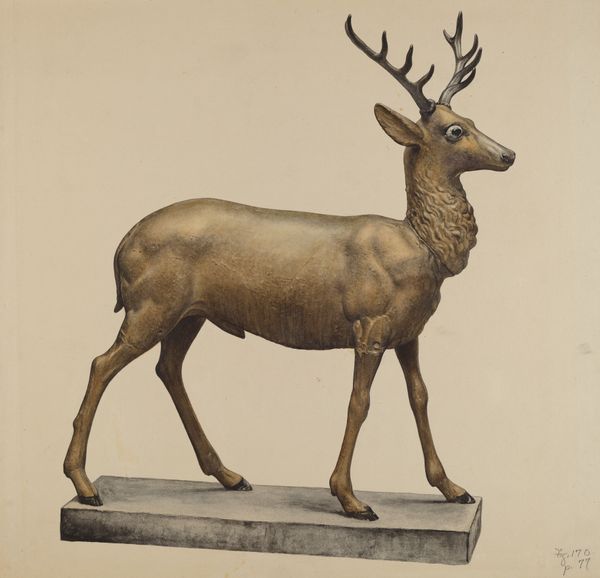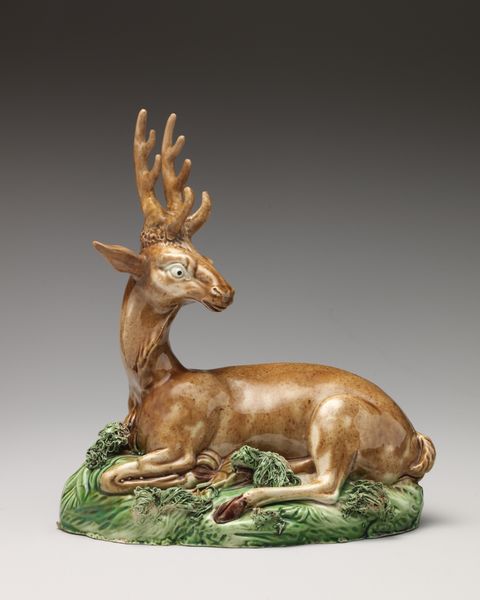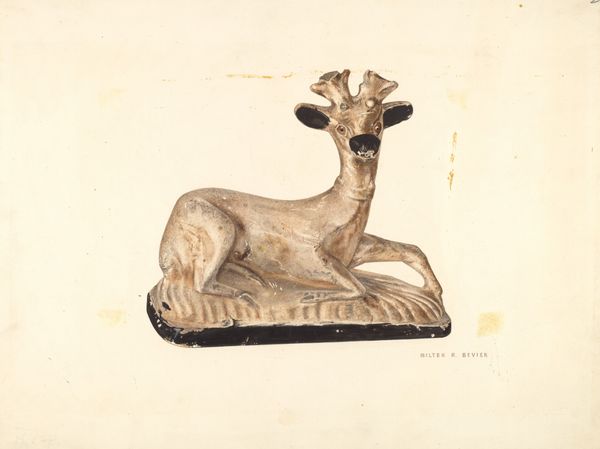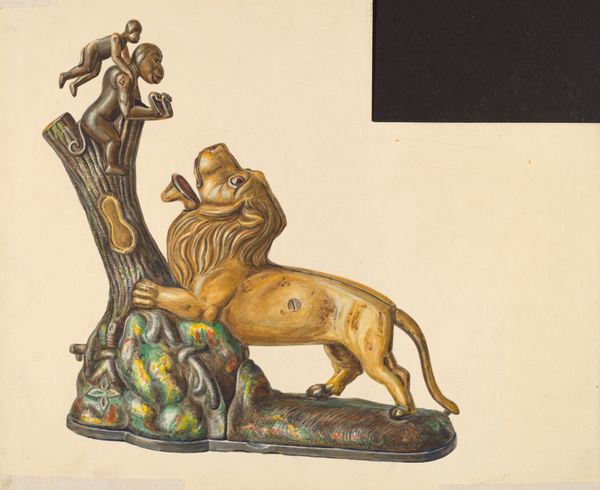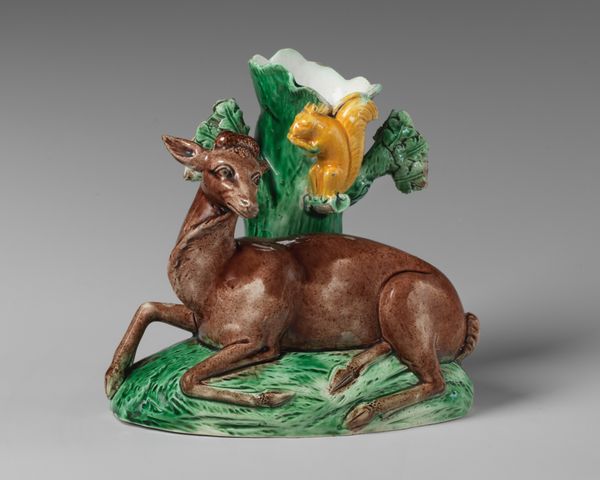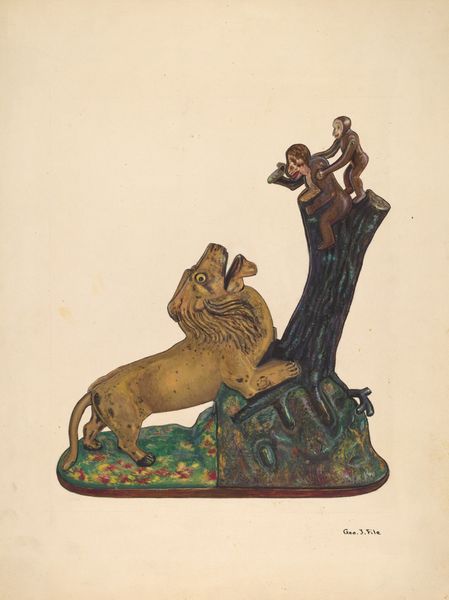
drawing, watercolor
#
drawing
#
figuration
#
watercolor
#
animal portrait
#
decorative-art
#
watercolor
#
realism
Dimensions: overall: 25.1 x 30.4 cm (9 7/8 x 11 15/16 in.) Original IAD Object: 11" long; 5 3/4" wide; 11" high
Copyright: National Gallery of Art: CC0 1.0
Editor: Here we have "Stag Statuette," a watercolor and drawing from sometime between 1935 and 1942 by Cleo Lovett. I'm really struck by its stillness, it has an almost photographic quality. What stands out to you when you look at this work? Curator: Well, immediately, I see the interplay between representation and material reality. The artist chose watercolor, a medium traditionally associated with delicacy, to depict what appears to be a mass-produced, possibly ceramic, object. Editor: Interesting! I hadn't considered the medium itself so much. Curator: Consider the social context too. The date suggests the Depression era. Was Lovett commenting on mass-produced objects becoming stand-ins for handcrafted ones, during an economic hardship? Was this statuette, easily replicated, accessible to people who couldn’t afford the materials of the fine arts, like bronze? Editor: I see your point. The painting then becomes not just an image of a stag, but also a reflection on consumerism and class, perhaps? Curator: Exactly. And consider the artist’s labor in meticulously rendering this object in watercolor, elevating its status, while simultaneously questioning the hierarchy of art and craft. Are they critiquing the culture of materialism or engaging with it? Editor: So you're saying the very act of choosing to paint this particular subject matter with watercolor imbues the work with layers of meaning related to production and social value. It’s like, the painting becomes an argument in itself! Curator: Precisely. Art doesn't exist in a vacuum. It’s produced by someone, with specific materials, under particular conditions. By examining those elements, we can unlock deeper interpretations. Editor: That's a fascinating perspective, it’s broadened my understanding of the piece immensely! Curator: And that's what makes art history so exciting, isn’t it? We peel back the layers, one brushstroke, one firing, one social condition at a time.
Comments
No comments
Be the first to comment and join the conversation on the ultimate creative platform.

